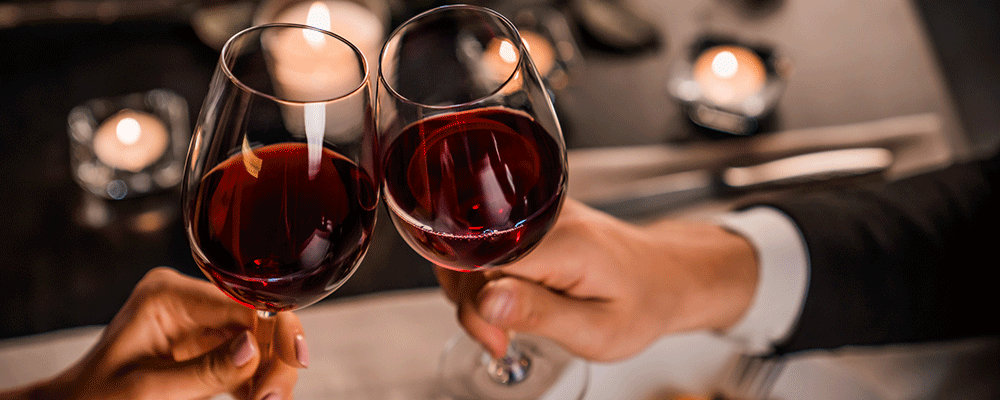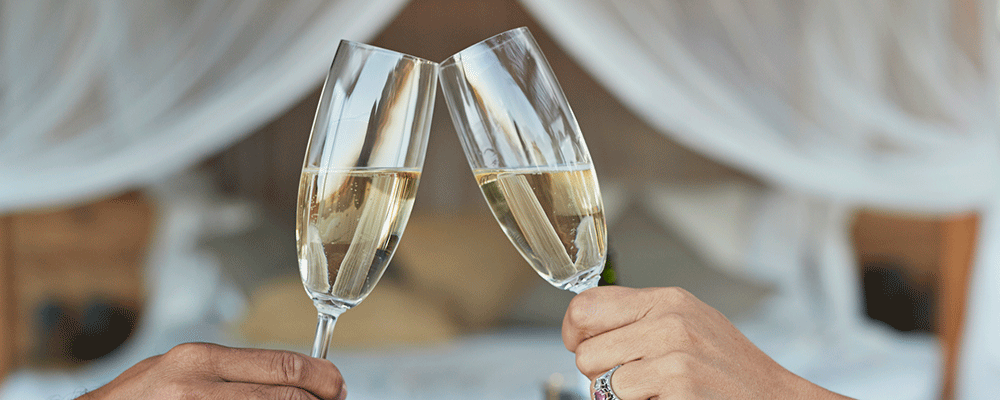New Zealand is world famous for producing delicious wines. What’s remarkable about our small country’s wine industry is the wide range of wines available. From light and aromatic whites to rich and robust reds, you can find a locally made wine that matches your palette and preferred flavour profile.
Even within each wine variety, New Zealand’s different regions, soil types and climates produce a stunning array of flavours. For example, a New Zealand made Sauvignon Blanc can be aromatic with light flavours of crisp green apple, all the way through to a more mouth-filling flavour of rich pineapple and passionfruit.
Want to know more, or not sure where to start? Talk to an expert in your local New World Wine department, and they will be happy to help you make a stand-out selection.
Primarily we produce wines in New Zealand that are a reflection of the varietal character and for the most part are one variety dominant, for example Chardonnay. Within a variety there can be a huge range of variation on aromas and flavours created by the different regions, soil types and climates. Sauvignon Blanc can vary from the crisp green herbal though to the more mouth filling richer flavours of pineapple and passionfruit with huge range in between.
White wines
There are huge variations and some white wines taste sweeter than others because even though they have the same sugar level, the fruit reminds us of sweet flavours. For example, Sauvignon Blanc often reminds us of flavours of fresh herbs and red capsicum, while Pinot Gris will remind us of ripe fresh pear. Both wines will be as sweet as each other in the amounts of sugar they have, but the Pinot Gris will appear to have a sweeter flavour.

Dry white wines
By definition, a dry white wine is a wine that’s not sweet. It’s all to do with the fermentation process and removing the residual sugars. But, the absence of sweetness does not mean the absence of fruit. Choosing a dry white wine means you’ll taste bold fruit flavours, only without the sugary sweetness. Dry white wine varieties include:

Medium white wines
These wines are slightly sweet when you first taste them and will leave a rich, slightly sweet aftertaste. These wines often have “medium” or “off dry” on the label. Varieties include:

Sweet white wines
These wines are very sweet and luscious and will often have on the label “Noble”, “Late Harvest”, “Late Pick” and “Botrytis”. These terms tell you a little about how the wine is made. Late harvesting is where the grapes are left to over-ripen and shrivel slightly on the vine, which concentrates the sugar level.
New Zealand winemakers can allow the fungus Botrytis Cinerea, also known as Noble Rot to infest the grape bunches. This fungus shrivels the grapes, reducing the water content and intensifying the sugar concentration.
As a side effect, the Noble Rot also introduces flavours of ginger and honey, making it common in the production of dessert wines.

Crisp white wines
Riesling
Fruity white wines

Red wine
You may be surprised to learn that the juice from many red grapes is actually clear. The red colours you find in your wine bottle can come from leaving the pressed grape juice in contact with the grape skins.
Red wine is home to a variety of flavours, ranging from delicate to the incredibly rich and robust. In addition to the different flavours, red wines also contain a compound called tannin. Tannin is the product that provides the astringent character in black tea and will make the wine 'taste' bigger and fuller in your mouth.

Dry red wines

Sweet red wines

Full bodied red wines
These wines are rich and have masses of flavour. Varieties include:

Lighter bodied red wines
These wines are softer and are often less intense to taste. Varieties include:

Sparkling wines
Sparkling wines are made throughout the world and the most famous are from the Champagne region in France. Of course, to be called ‘Champagne,’ the sparkling wine must be produced in that popular French region. As a result, you can find a number of very enjoyable sparkling wines without the premium 'Champagne' brand.


How to choose wine
In New Zealand we are simply spoiled for choice with the range of incredible, locally produced wine on offer. Both the varieties of wine grown here, and the sheer number of Kiwi vineyards available mean you have a number of starting points for finding a great wine for any occasion.
-
How much does good wine cost?
With wine you tend to get what you pay for. The difference in quality between a $5 bottle of wine and a bottle over $30 is usually quite significant. Fortunately, there are very good wines available for under $25.
In terms of grape varieties, Riesling and Chardonnay will normally give better value for your dollar spent quality-wise than some of the higher profile varieties such as Pinot Noir and Syrah.
In Europe and the United States, there is huge production of very cheap ordinary wine. Whereas in New Zealand we produce, by world standards, tiny volumes of wine. Our focus is very much on quality over quantity.
By looking for labels from New Zealand wineries, you’re supporting local and virtually guaranteed to choose a delicious, quality wine.
-
Choosing an organic wine
Did you know you can pick up a delicious bottle of wine and help protect our environment?
New Zealand is now at the forefront of a growing worldwide trend establishing sustainable winegrowing practices. At its core, sustainable winemaking is focussed on looking after our land, and reducing the environmental impact of synthetic chemicals.
There are many actions wineries can take to become more sustainable. Look for these logos on the back of a wine bottle.
CarboNZero
To keep making wine, we need a healthy planet. CarboNZero is an internationally recognised scheme that helps all New Zealand businesses, including wineries, to lower their carbon emissions. Reducing greenhouse gas emissions is good for the environment and good for business, as it also looks at ways to manage energy and water usage, reduce waste and increase biodiversity.BioGro
Many winemakers have a commitment to grow and produce wine sustainably. Featuring the BioGro label proves your wine is certifiably organic, and has met their rigorous standards around not using genetically modified products or synthetic pesticides.
-
Use awards to find good wine
This is where using medals and awards that wines have received, helps you make the best decision. The New World Wine Awards is the only New Zealand wine competition where wines must retail under $25.
By limiting entry to wines under $25, our goal is to help you choose a delicious wine that you can enjoy with family and friends.
With the New World Wine Awards, our panel of world-class judges taste each wine ‘blind.’ They have no idea who has produced the wine they’re tasting. The wines within each category will be compared against each other to decide who wins Gold, Silver and Bronze awards.
Looking for a New World Wine Awards sticker on your next bottle means you’re choosing a wine that has been judged as ‘delicious’ by an independent panel of wine experts.
-
What does vintage mean?
Simply, the year that you find printed on the wine label tells you when the grapes were picked. Why does that matter?
Some wine varieties are matured in barrels before release. If the wine is just appearing on shelves with a vintage statement a year or two older, you’ll know it’s already spent some time maturing.
The main reason wine producers put a vintage on the label is to do with the weather. Was it a mild winter that year? Did the region have a longer summer? Was there a particularly harsh frost? All these factors have an influence on the grapes and the wine being produced, which is why two bottles of Sauvignon Blanc produced in different years by the same winery may taste very different.
-
Wine and food pairing
Wine and food pairing is fun and a great way to learn more about different varietals of wine. With food and wine matching, be adventurous - as one wine judge recently remarked, one of the most outstanding matches he had tasted with New Zealand Syrah was Singapore Chilli Crab!
While there are no hard and fast rules, here are a few tips that help when selecting the perfect food wine.
- Look at the weight, flavour and texture of the wine and relate it to the food. A big hearty Australian Shiraz may well swamp the delicate flavours of a lightly poached chicken dish, but could also be perfect with sautéed mushrooms with garlic and parsley. There are a few combinations that aren't so great. A red wine like Cabernet Sauvignon and a pan fried white fish tends to be high on the 'this doesn't work list'. The red wine flavour swamps the flavour of the fish and red wine can sometimes give fish a metallic flavour which is very unpleasant. High acid wines like Sauvignon Blanc, Sparkling wine and Riesling don't work well with creamy sauces, but having said that there will always be the exception to the rule.
- When buying wines for gifts, sparkling wines are always a safe bet, as are food friendly wines that display award and medal stickers. Again be bold and use the stickers to choose wines and varieties you haven't tried before. Talk to your New World Wine department staff, they will be happy to help you make that stand-out selection.


